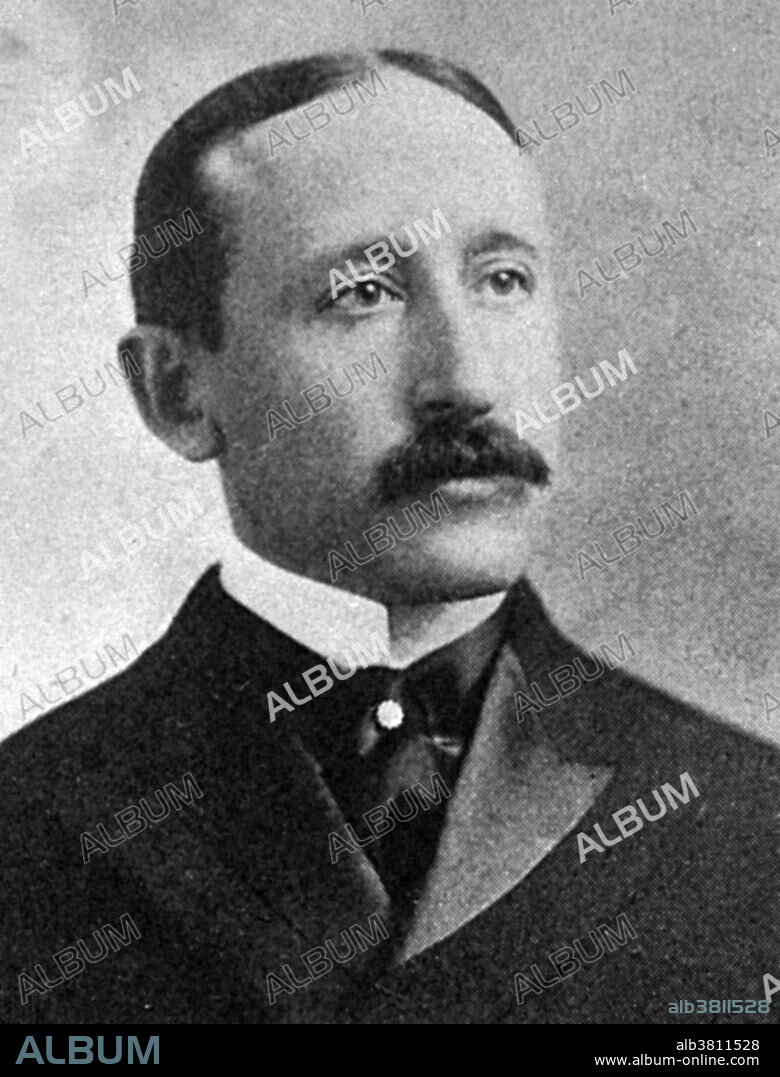alb3811528
James Stephen Ewing, American Pathologist

|
Add to another lightbox |
|
Add to another lightbox |



Buy this image.
Select the use:

Title:
James Stephen Ewing, American Pathologist
Caption:
James Stephen Ewing (1866-1943) was an American pathologist. He was the first Professor of pathology at Cornell University and became famous with the discovery of a form of malignant bone tumor. Ewing was active in many fronts, including hematology as well as oncology. A scientific breakthrough came in 1906, when Ewing and his collaborators proved for the first time that a cancer (lymphosarcoma in dogs) could be transmitted from one animal to another. In 1920 he published his first work on a new kind of malignant osteoma, which later received his name, Ewing's sarcoma. Ewing became known also as one of the first proponents of radiation therapy for cancer, having founded the National Radium Institute in 1913. He was responsible for the creation of present-day Memorial Sloan-Kettering Cancer Center in New York City, one of the most important multidisciplinary centers devoted to oncology in the world. He worked at the Memorial until his retirement, in 1939. He died from bladder cancer at the age of 76.
Credit:
Album / NLM/Science Source
Releases:
Model: No - Property: No
Rights questions?
Rights questions?
Image size:
2727 x 3579 px | 27.9 MB
Print size:
23.1 x 30.3 cm | 9.1 x 11.9 in (300 dpi)
Keywords:
1866 • 1906 • 1913 • 1920 • 1939 • 1943 • 20 XX TWENTIETH CENTURY • 20TH CENTURY • 20TH • ART • ARTWORK • BLADDER CANCER • BONE CANCER • BW • CANCER OF THE BONE • CANCER TRANSMITTED • CELEBRITIES • CELEBRITY • CREATED • DISCOVERED • DRAWING • ENGRAVING • EWING • FAMOUS PEOPLE • FAMOUS • FIGURE • HEMATOLOGIST • HEMATOLOGY • HISTORIC • HISTORICAL • HISTORY • ILLUSTRATION • ILLUSTRATIONS • IMPORTANT • J. EWING • J. S. EWING • JAMES EWING • JAMES S. EWING • JAMES STEPHEN EWING • MALE • MALIGNANT BONE TUMOR • MALIGNANT OSTEOMA • MAN • MEMORIAL SLOAN-KETTERING CANCER CENTER • MEN • NOTABLE • ONCOLOGIST • ONCOLOGY • PATHOLOGIST • PATHOLOGY • PEOPLE • PERSON • PERSONALITIES • PERSONALITY • PHOTO • PHOTOGRAPH • PORTRAIT • POTRAIT • PROPONENT OF RADIATION THERAPYY • SCIENCE • SCIENTIFIC BREAKTHROUGH • SLOAN-KETTERING CANCER CENTER • SWING'S SARCOMA • SWINGS SARCOMA • TWENTIETH CENTURY • WELL-KNOWN
 Pinterest
Pinterest Twitter
Twitter Facebook
Facebook Copy link
Copy link Email
Email
